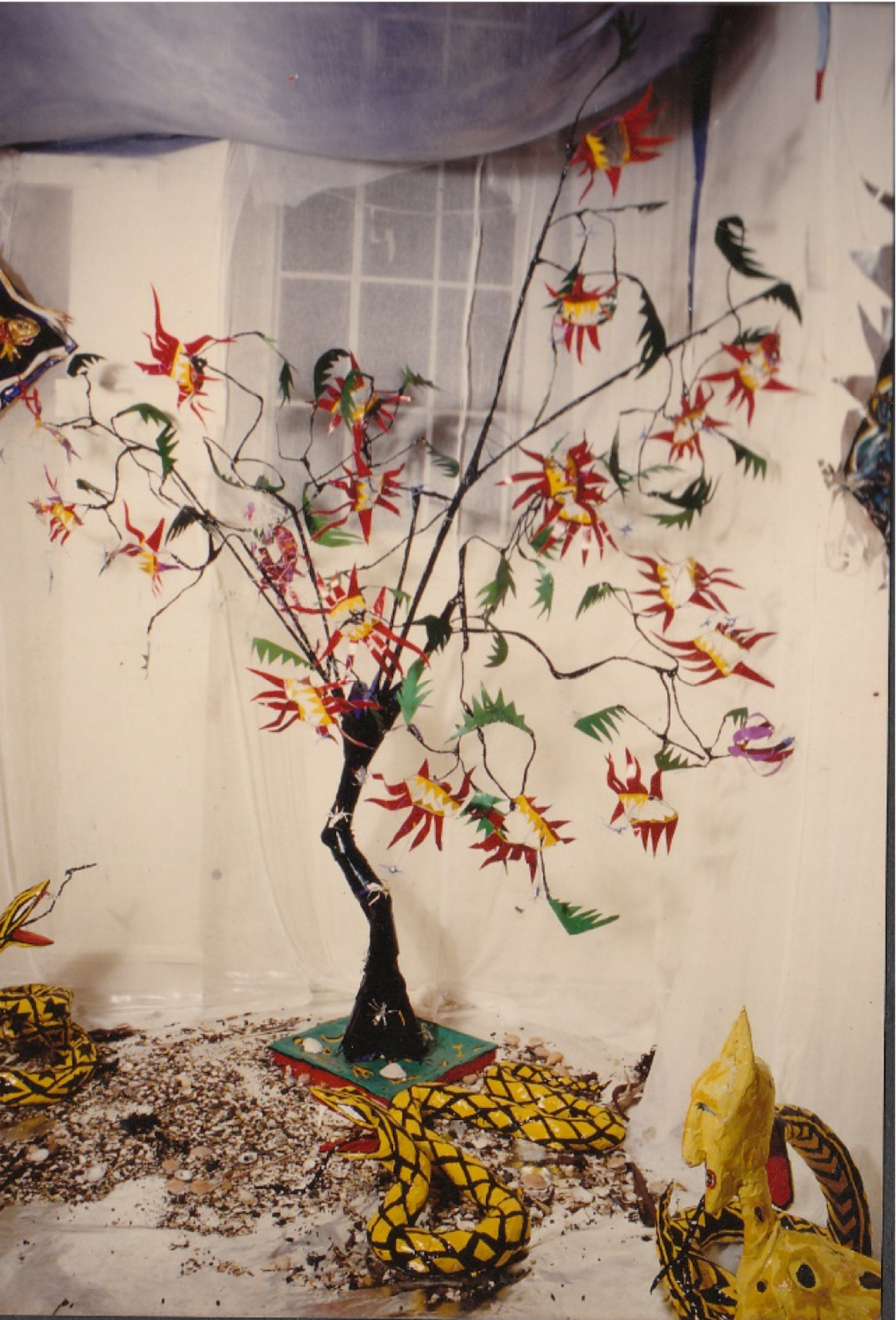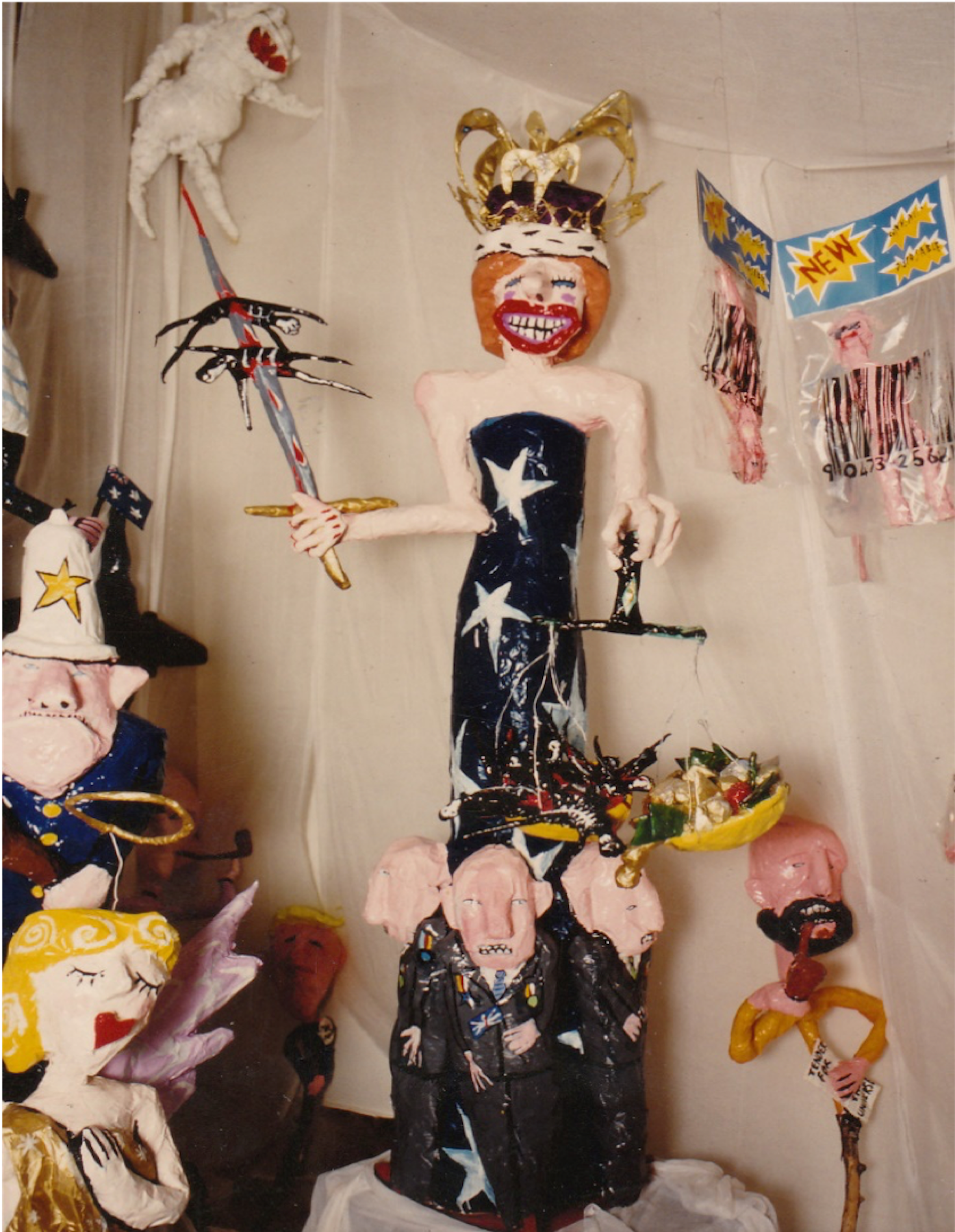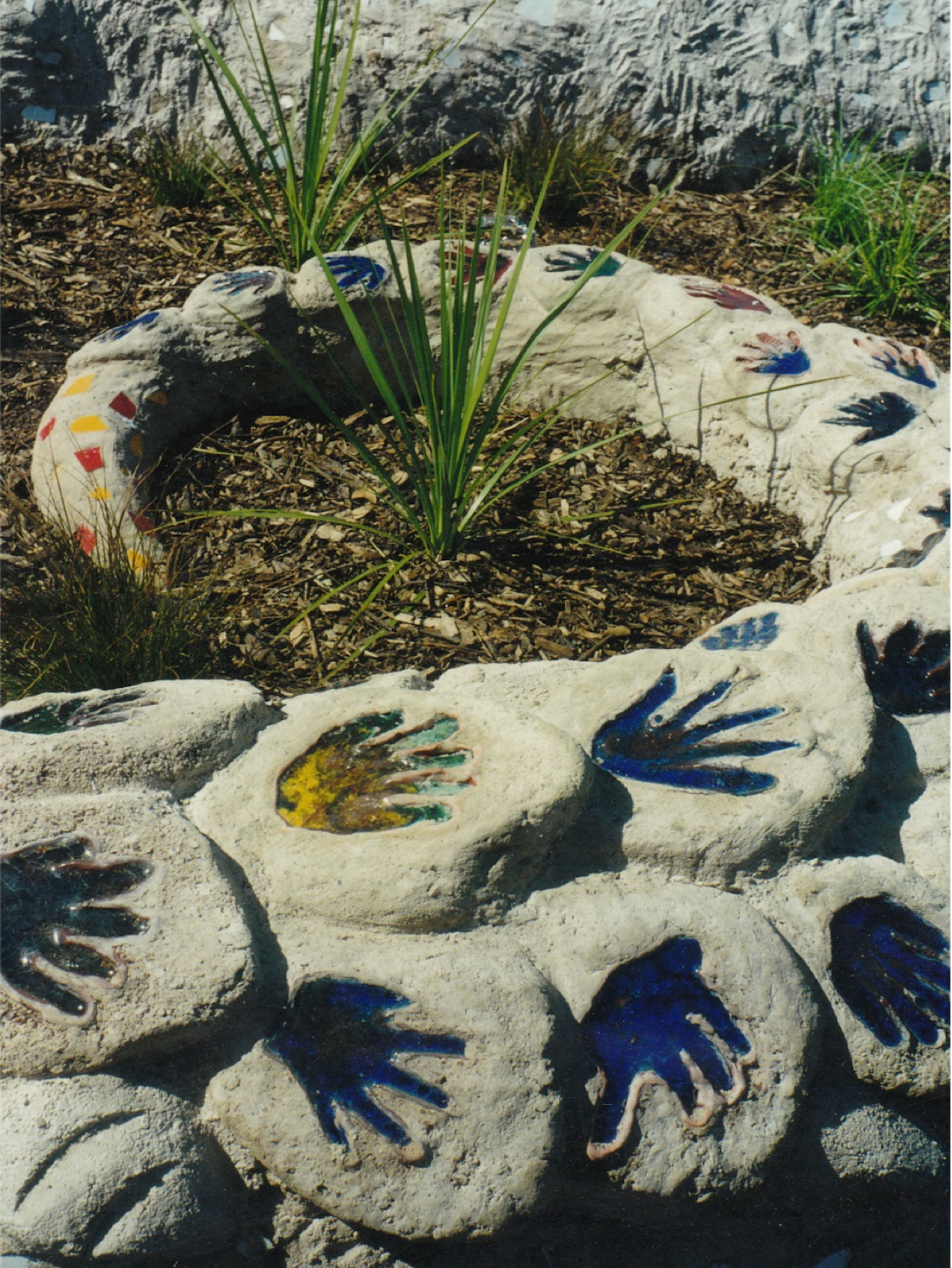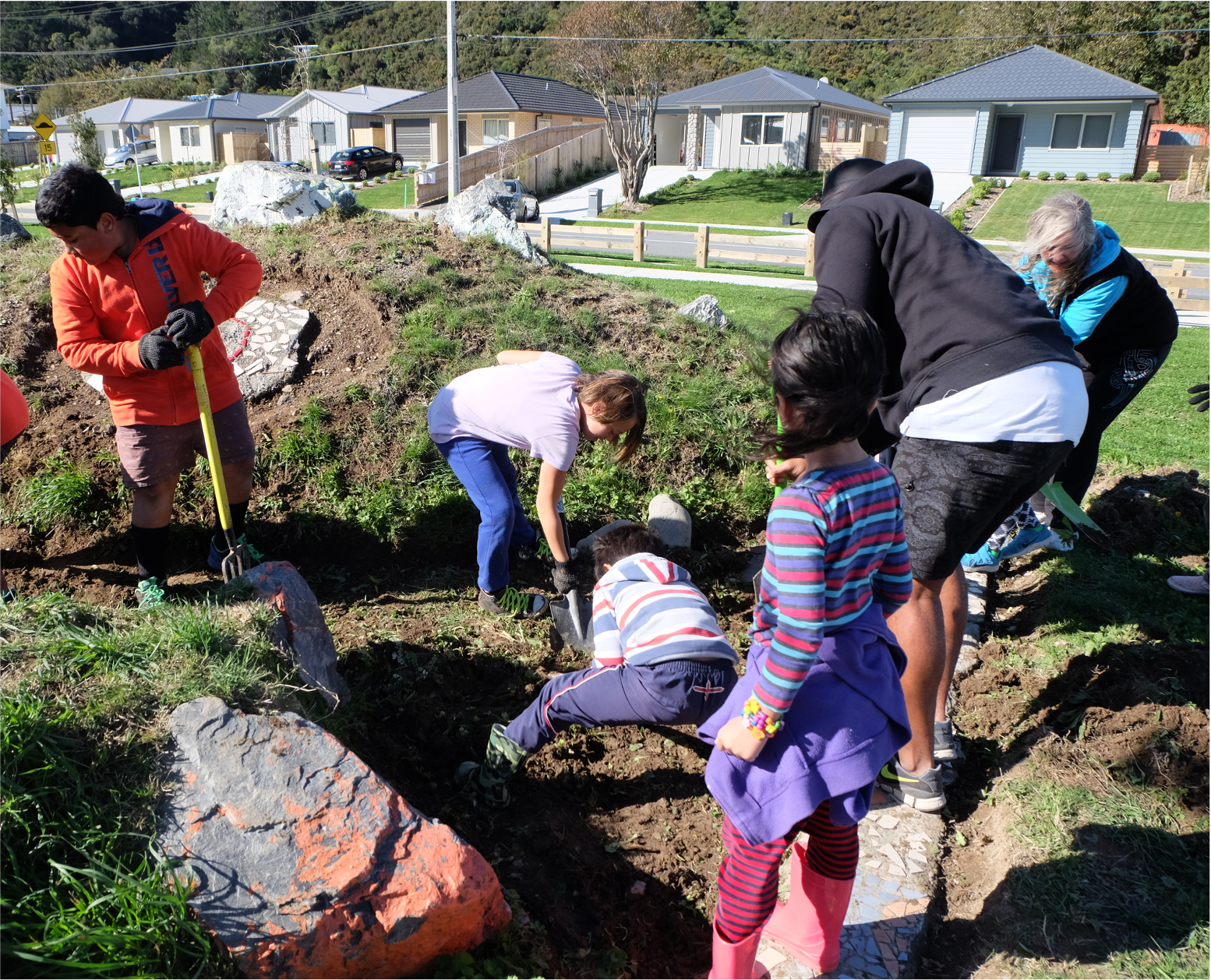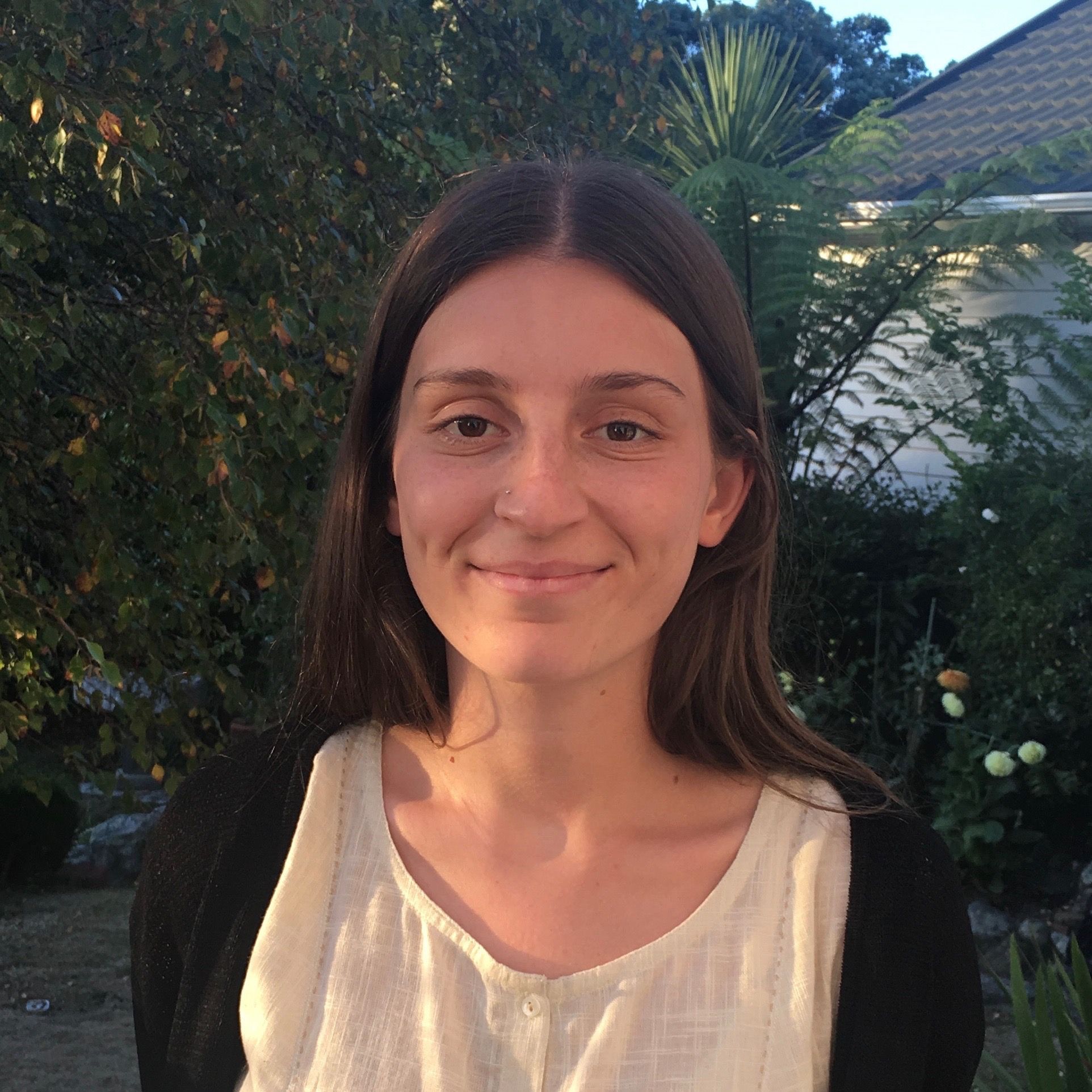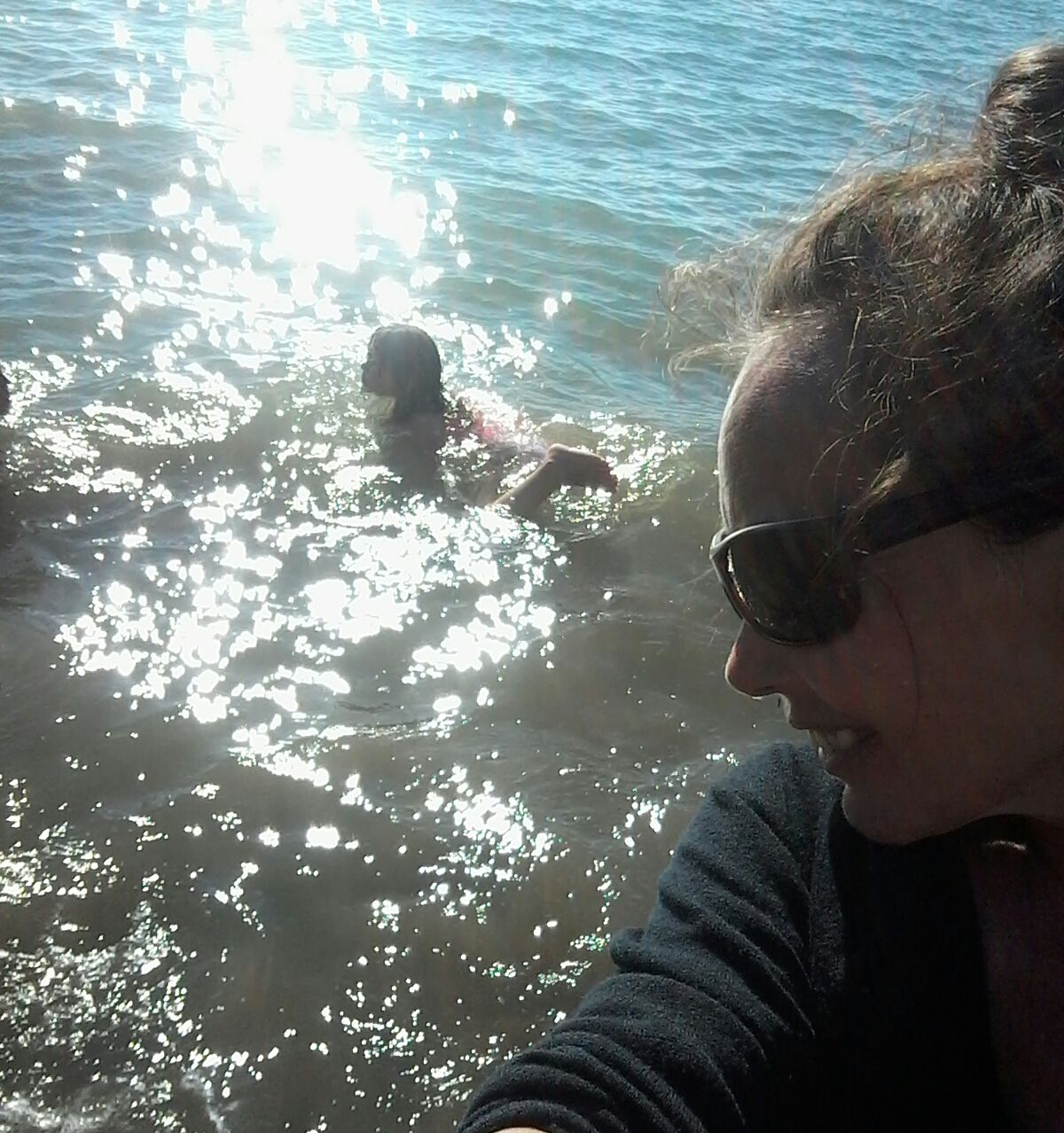In the Harakeke: A Kōrero with Debra Bustin
Moya Lawson talks with artist Debra Bustin (Ngāti Pāhauwera) about the spaces she’s inhabited and carved out for herself and others over the course of her career, spanning over fifty years.
Debra Bustin (Ngāti Pāhauwera) is an artist based in Ōtaki on the Kapiti Coast. She has led a practice spanning over fifty years that encompasses a wide range of mediums and formats, and is manifested in a myriad of spaces.
Here, Debra talks with Moya Lawson, a curator currently based in Naarm Melbourne, about the spaces she’s inhabited and carved out for herself and others. She discusses her art, life, and the art/life divide that her art innately dismantles.
Debra Bustin: I’d like to start in my first creative space as a small child under the trees. My imagination alive, making worlds with sticks, stones and leaves, carving images into the earth with twigs, arranging seeds and piles of dusty clay. This is the sanctuary that remains at the heart of the spaces we’ll be talking about in relation to my art.
I've always wanted to hold onto this space – that creative sanctuary where you just zone into what you're making, where imagination is alive and you feel at one with the world around you.
It's the place where I first identified that life is an inherently creative space. Worlds within worlds. I loved to hide in the middle of the harakeke and split the fronds to reveal the deep-orange base, in awe of the endless colour inside the leaves while being enclosed within them. This is where I understood the infinite layers of the world around me.
Those spaces are very important to me. In all my artistic pursuits, I am bringing the same engagement as I had making things under the trees, or in the harakeke.
Exhibition with Bowen Galleries, Pōneke Wellington, 1986
Moya Lawson: How do you bring that engagement into the white gallery space?
DB: For me the white gallery presents a three-dimensional empty canvas, it is symbolic of the void of Te Kore, it has limitless potential. I love to draw into that void and make marks of life within it. On many occasions I have gone to great lengths to paint a venue white – walls, ceiling and floor – to create the emptiness upon which my worlds can dance.
ML: And some of the early work that you made for gallery spaces, especially installation, you transformed the white box so that it was almost unrecognisable.
DB: I would want to make the illusion complete. Like when you paint a painting, at the end of it you're not looking at the white canvas anymore, you’re in the picture.
For me the white gallery presents a three-dimensional empty canvas, it is symbolic of the void of Te Kore, it has limitless potential.
I never used to call my work ‘installation’, that’s how other people understood it in an art context. I wanted my work to be a portal into another world, into another way of seeing. In my work I want to express the nature of our world, as a space that is in the ongoing process of creation, that is inherently creative.
ML: Did you ever have any issues with the apparent border that exists between the gallery and the rest of the world outside of it?
DB: I feel like the social structures that define the gallery space don’t align with what I experience in life. Quite early on in my career, I became disheartened with how closed-off and limiting ‘the art world’ was. I wanted to extend out into other formats, and really be in the world with my art.
I always felt that my personal relationship to my art was bigger than the limits of the narrow-walled institutions of art. I wanted to create experiences for people that would interrupt and disrupt, challenge and inspire.
ML: In what other formats did your art find expression?
DB: In 1986, I was invited to take over the Student Union Building at Christchurch University for orientation events. I focused the entire work around the large central staircase and turned it into the Stairway of Success, the dream that universities sell to their students. The whole space was lined with cloth and huge papier-mâché effigies: giant archetypes that challenged established belief systems and social constructs. Many students helped make this happen.
Soon after that project, I began making tents. I was thinking about the whole universe being like a tent that houses us, holding worlds within worlds – and the Tent of the Universe was born. The Tent of the Universe #1 was pitched in Civic Square for the 1987 International Arts Festival.
The Tent of the Universe #2 began in 1989, this was a way to create an autonomous venue to house my worlds, ideas and art, which could tour around the country, a travelling show of wonders, reaching a whole new and much larger demographic of people – it was very exciting.
The Queen, on tour in 1986-87. Venues include the Student Union Building at Canterbury University, Ōtautahi Christchurch, and The Tent of the Universe #1, Pōneke Wellington.
ML: How important was collaboration in these large-scale projects?
DB: I have spent many, many hours working on my own, making my art. I love this space and can’t live without it. Creating large-scale projects is a way to carve out new social, political and environmental territory where art can thrive. Working at such a scale inevitably involves many people.
I’m finding it hard to determine a specific time when I started to work like that. There are always collaborations happening because people get excited by sharing ideas and making plans. I was inspired by the power of collective creative energy when creating The Nuclear Horror Show, a parade through central Wellington in 1983 against nuclear power. This was a visual expression of the political events of the time. Everyone contributed to the pool of ideas, skills, money, resources and time. I learnt from this experience that when people come together on a shared kaupapa, great things can be created. Ideas do not need to be dependent on funding and institutional support. If a kākano is nurtured it will grow.
ML: A key feature of your collaborative practice was (and still is) making public artworks with communities.
DB: Collaboration can mean many things: sometimes you’re making with other professional artists, and sometimes you’re making with people who have never held a paintbrush in their lives. I really believe that the people who live in and belong to a place should be involved in the making of their spaces. It’s important to work out how to best involve people in owning and having input into their public and shared community spaces.
ML: As the artist, you set a kaupapa that allows for all contributions to coalesce as one.
DB: I love to design inclusive structures, systems and models. I love the mathematics of working out complexities, problem solving, realising and manifesting the impossible as artworks that represent all involved, and inspire alternate social structures in doing so. For example, with the Taniwha of a Thousand Hands in Waitākere we went to all the schools in the area and did clay workshops with 1000 children. Their clay hands became the scales of their taniwha in their park.
Taniwha of 1000 Hands (detail), Waitākere, 1988
ML: What impact do these kinds of projects have on their communities beyond the immediate experience of making?
DB: Simple relationships to a work – like “Oh, my daughter’s handprint is there”, or “My niece helped make this” – are a demonstration of how everything connects. Woven within that connection are other stories and experiences of a place, and as soon as you’ve got someone’s personal input in something that connection becomes ownership. It is theirs.
ML: Do the works you make ever speak back to the authorities that governed those spaces? Here I’m thinking about one particular taniwha, Guardian to the Rebirth of Pomare in Pomare, Lower Hutt, which you went back to renovate in 2015.
DB: Yeah, it was so good to go back there. The original project began when I was asked by the residents of a housing complex to make a taniwha with them, which we did. This was an ambitious grassroots project with a very small budget and relied heavily on the commitment and dedication of that community. There was a large grass common in the centre of the complex where the taniwha lived. Thirty years on, the community were evicted from their homes to make way for a new housing development. However, they protested the looming destruction of their taniwha and staged an occupation at the site. They were successful. With the support of the local council, The Guardian to the Rebirth of Pomare was renovated with the involvement of the original residents. In the space of 30 years some of those original whānau had passed away, so new artworks were created and incorporated in their memory. Children who had worked on the original project were now adults and returned with their mokopuna. That intergenerational connection is powerful and speaks volumes.
We are as much a part of the natural environment as the rain and the trees. Even our complex human-centred environments are natural.
ML: I guess, then, thinking back to what you were talking about at the start, how your art making comes from a layered and living space, would you say that the work you make with communities is environmental in the way it operates?
DB: We are as much a part of the natural environment as the rain and the trees. Even our complex human-centred environments are natural. They are governed by the same natural laws. Everything is connected, driven by the same essential life force. Art has the ability to weave elements together, to create new connections and pathways to pursue. So when we engage with a more holistic creative embrace of space in our art practice, we are enlivening and participating in the very essence of being. The histories in each place I’ve worked are all different and run so deep – we’re talking about real life and real people. A multifaceted canvas with infinite possibility.
ML: Do you want to talk a bit about your current project for the Kōhanga in Ōtaki?
DB: This particular Kōhanga Reo is my world. All my mokopuna have been nurtured within this space of aroha and manaakitanga. It is the place that aligns with everything I stand for.
Making creative, inspiring and imaginative spaces for our children is the most important and rewarding art practice I can think of. Igniting their passion to engage with life, their connection to the natural world, and nurturing their imaginations. Creating environments they belong to, that support and affirm who they are.
Mokopuna renovating Guardian to the Rebirth of Pomare, Te Awakairangi Lower Hutt, 2015
We are creating a taniwha. She is a kaitiaki. She manifests as an earthwork, a landscape, and an interactive play space. She will be made of earth cement and covered in the footprints of the mokopuna. All the whānau are involved – koro on the concrete truck, matua on the digger, rangatahi digging, kai being prepared. All hands on.Lots of people, ideas and mātauranga will be held within her.
ML: She’s of that multifaceted canvas that you first engaged with as a child.
DB: She is her environment, she’s only of that place, and of the people of that place. She sits beside the huge pōhutakawa tree that has been growing for hundreds of years. She’s been imagined for a long time. And only the whānau here in Ōtaki will really know her, just quietly doing her thing for the people she belongs to, a powerful and enduring symbol holding the wānanga and aroha that we as kuia want to pass on to our mokopuna.
ML: You’ve made many of your large-scale projects with the help of your own whānau – can you elaborate on the work you’re doing with them?
DB: The infinite possibilities of the multi-faceted canvas of life is the fabric from which we are building a new whare, Te Whare Auaha – a place where creative possibilities are endless, where each person is valued, a place that can house and inspire many whānau. I have found through all my years of making worlds out of paper, cloth, canvas and paint there is this other medium to weave with. These creative threads do not have to be visible, which is really inspiring. It’s the same inspiration I had as a child in the harakeke, engaging with life and its potential. That, to me, is what art is – taonga have to have their people to breathe life into them.

